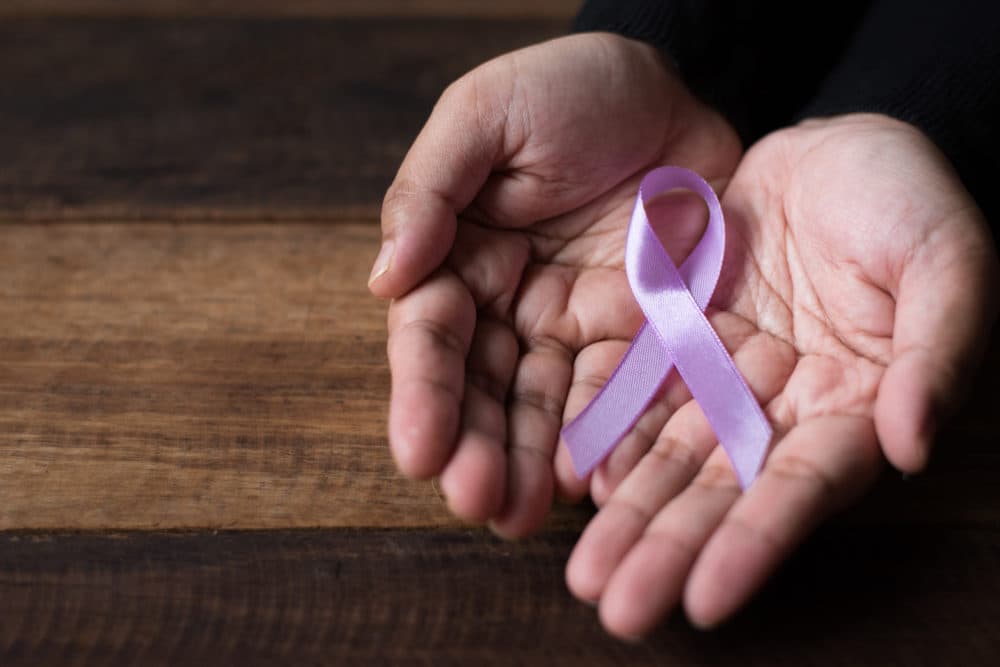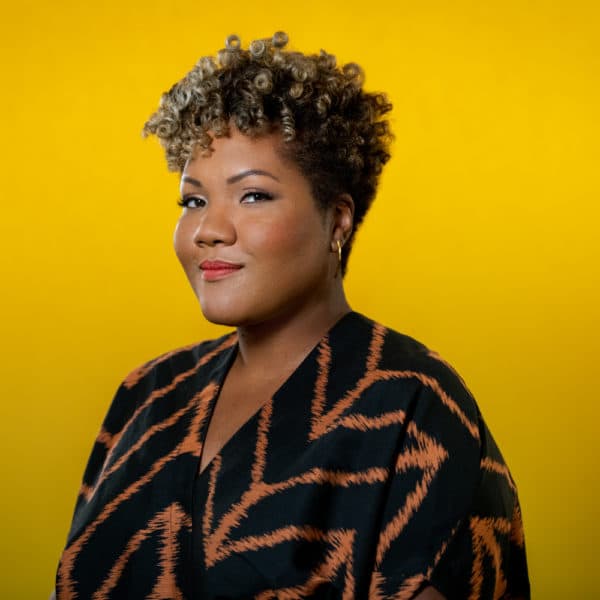Advertisement
Where the war on cancer stands 50 years after it started

Fifty years ago this week, President Nixon signed into law the National Cancer Act.
The goal was to invest in medical research with the hope of finding a cure for cancer in just five years.
“And I hope that in the years ahead, that we may look back on this day and this action as being the most significant action taken in this administration,” Nixon said.
Of course, there still is no cure for cancer. But where has the war on cancer led us?
Otis Brawley, former chief medical officer of the American Cancer Society and professor at Johns Hopkins University, says we have come a long way. Five decades ago, half of all Americans diagnosed with cancer died from it. People were scared to talk about the disease, calling it “the Big C,” he says.
Cancer does still affect a large number of people, but he says progress has been significant.
“We've had a 31% decline in the relative risk of death since 1991,” Brawley says. “Much of it is attributed to the National Cancer Act.”
Researchers and health professionals have learned a great deal about understanding cancer, what causes it and how to reduce risk. But people often don’t practice risk prevention, he says, and getting people motivated to prevent cancer is no easy feat.
“What we thought was cancer in 1960 and what we think it is in 2021 is totally different,” Brawley says. “And much of that actually does lead back to that prevention thing as being the low hanging fruit, the opportunity that needs to be exploited.”
Interview Highlights
On cancer historian Judith Pearson writing Nixon's war on cancer was “the most magnificently fruitful failure in history” because while there are many advances in research and treatment, there is still no cure
“I think cancer is a number of different diseases, perhaps 200 different diseases. Some of the advances that we've made through the National Cancer Act have developed additional treatments. Some have developed additional screening. Perhaps the most important thing to come out of the National Cancer Act is an understanding of what cancer is and what causes cancer. And that leads us to the ability to prevent a lot of cancers. I now know that we can prevent at least 50% of all cancers going beyond smoking, which was known to be a cause of cancer when Nixon signed the National Cancer Act. We now know that about 30% of cancers are due to energy imbalance, obesity, not enough exercise and consuming too many calories, for example. We know about viruses and cancer. The HPV vaccination, which has the potential of preventing many head and neck cancers and cervical cancers. The thing that I like to stress is what we can do in the field of prevention or risk reduction is not just screening and treatment, although screening and treatment so much, so much of the airway.”
Advertisement
On whether the medical industry has gone far enough to educate people on cancer prevention methods
“I do not feel the medical industry has gone far enough. I frequently say that the way to prevent cancer is to improve the education that's provided to people in second and third grade. We need to teach people ways of living a healthy life that involves consumption of five to nine servings of fruits and vegetables per day, that involves 30 minutes of good exercise at least five times a week for adults, and even more than that for children. Of course, not smoking as well, including not using e-cigarettes and marijuana. These things that I'm talking about, these health promotion things, prevent cancer. They also prevent the other chronic diseases like cardiovascular disease, diabetes and even orthopedic injury. So we really do need to stress prevention. One of the problems is how do you make money off of prevention? And when I say make money off of prevention, I mean, how does one make a living off of it? And by the way, prevention is not taking vitamins or taking supplements or something like that. It's simply a good, balanced diet with exercise and avoiding well-known carcinogens.”
On health disparities between race and socioeconomic status
“The most recent data really is striking about [disparities]. For example, if we look at breast cancer, there are five states in the United States where Black and white breast cancer death rates are the same. That indicates that we can do a great deal more for breast cancer for Black women. American Cancer Society epidemiologists actually suggest that if we get everything that we currently know people should get — from prevention or risk reduction all the way through appropriate screening and appropriate treatment — 130,000 of the 600,000 cancer deaths that are going to occur this year would not occur. And by the way, 80,000 of that 130,000 deaths are in white Americans. So when we talk about health disparities, a Black or poor person or Hispanic person in the United States is more likely to suffer from those health disparities. But the largest group to suffer from health disparities are white Americans.”
On looking back at previous presidential initiatives to end cancer
“In many respects what came out of the National Cancer Act that many people don't totally appreciate is a momentum that develops new knowledge about what cancer is as well as training a large force of people, primarily in molecular biology and cellular biology. That has led to a number of people in the biotech industry. The biotech industry blossomed because of the National Cancer Act. Today, more research is done by private companies than done by the U.S. government funded through universities. I happen to think that we've learned a great deal and we can apply a great deal more. But implementation science is something we also need to think about. Implementation science is how do we get the fruits of what we're developing to all the people? But I'm very optimistic.
“One thing I should point out is the death rate from colorectal cancer today is literally 50% of what it was in 1981. Your average American, their risk of dying from colon cancer is half what it was 40 years ago. The death rate for women in the United States from breast cancer is 40% of what it was in 1990. So we are making some progress, and it really ought to give us a little bit more encouragement that we can make more progress. By the way, I do worry about the research efforts. Ten percent of grants going to the National Institutes of Health that are judged worthy of funding are actually getting funded right now. We have a lot of research ideas that are really good, but they don't get funded, so I do worry about the future.”
On what he envisions will take priority over the next 50 years
“I think over the next 50 years, or I hope I should say, that we will focus more and more on risk reduction. It's also doing such things as breastfeeding. For example, we've got data to show that women who have children and don't breastfeed increase their risk of some of the bad types of breast cancer. Indeed, this is part of the reason why Black women have a higher risk of triple negative, more aggressive breast cancer. It's really poor women who tend not to breastfeed. So I'm hoping that we can focus more on the things that we can do to live a healthy life.”
Lynn Menegon produced and edited this interview for broadcast with Peter O'Dowd. Serena McMahon adapted it for the web.
This segment aired on December 23, 2021.
